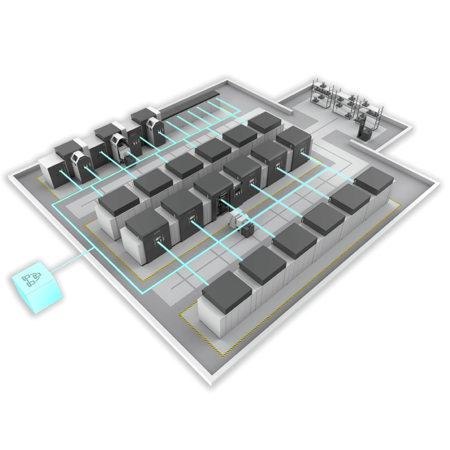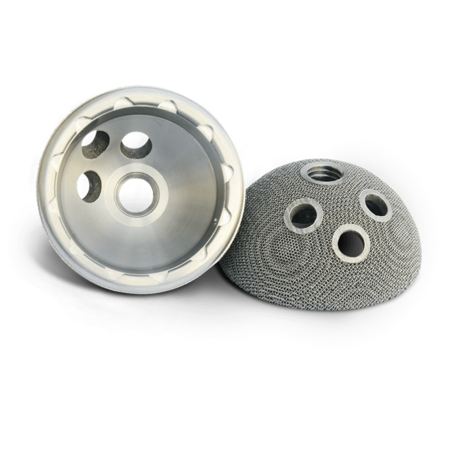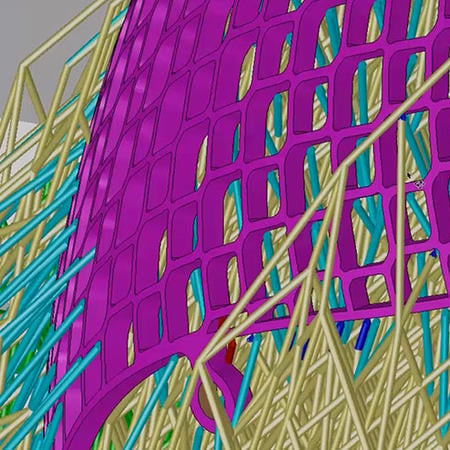Rodin Cars, a New Zealand-based car manufacturer, is using 3D Systems’ large-scale DMP Factory 500 metal 3D printer to produce the titanium components of its new bespoke track car, the Rodin FZERO. With performance and quality leading every engineering decision, the car is manufactured primarily from carbon fiber and titanium. 3D Systems’ metal additive manufacturing (AM) was selected as the production method for all complex titanium components to enable Rodin Cars to advance the design and performance of every part, regardless of size, including the eight-speed sequential gearbox – an industry first.
“Our goal was to make every component of this car the best that it can be. The Rodin FZERO can only be manufactured with additive manufacturing.”
- Adam Waterhouse, Lead Engineer, Rodin Cars
The Challenge
ACHIEVING LARGE-SCALE HIGH QUALITY TITANIUM PRINTED PARTS
Targeting a final weight of only 650 kilograms and producing 4,000 kilograms of downforce, the single seat Rodin FZERO (for “zero restrictions”) is engineered to lap a circuit faster than a current Grand Prix Formula One racer. With industry-changing engineering built into every component, Rodin Cars was intent on thorough optimization to deliver the ultimate component for every part.
When it came to using titanium additive manufacturing throughout the car, challenges arose as part sizes increased – particularly for large parts. Producing components like the gearbox to spec required a build volume beyond the capabilities of most metal printers. However, reverting to conventional methods of casting the gearbox in magnesium was not an option, as both the method and material would fall short of Rodin Cars’ objectives. To deliver the ultimate hypercar, Rodin Cars’ top priorities were to optimize for weight and function with AM, and use titanium for its value as a premium, non-corrosive material that will maintain peak performance and appearance over time.
The Solution
01 Innovation to Create a Lightweight Gearbox
The first step in optimizing the gearbox was creating a custom design together with renowned gearbox manufacturer, Ricardo. Following extensive work with 3D Systems after first adopting AM, Rodin Cars shared its gained knowledge with Ricardo, educating them on the unique benefits and capabilities of designing and manufacturing with additive. Rodin Cars needed very specific gear ratios and case dimensions, and knew it could only produce its design using AM. Removing excess mass was also a top priority, yielding thin walls down to 2mm thick in some areas. The two companies collaborated to design parts around the optimized geometry Rodin Cars was after, integrating internal galleries and fluid channels to help reduce the footprint of the final gearbox, which measures 400mm x 650mm x 300mm.
To produce titanium AM parts with the required dimensions and accurate features, Rodin Cars selected 3D Systems’ direct metal printing (DMP) for its unique large-format capability and proven quality and repeatability.
02 Proven Titanium Workflow
Optimizing the power to weight ratio is critical for high performance vehicles. As such, the ability to print the complex metal components in titanium was key for Rodin Cars’ mission to deliver premium performance while taking out as much weight as possible throughout the car. The integrity of titanium as a non-corrosive material also means neither the looks nor performance will degrade over time, which was important to Rodin Cars founder, David Dicker.
According to Adam Waterhouse, lead engineer at Rodin Cars, effectively any component that is metal and isn’t a bolt is 3D printed. “Every bracket through to the gearbox has been printed,” said Waterhouse. “It’s an enormous range of parts. It’s very much a printed system.” The final titanium gearbox is printed in LaserForm Ti Gr23 (A), and weighs only 68 kilograms, including steel internals.
3D Systems’ complete metal solution includes 3DXpert software, an all-in-one software for preparing, optimizing, and managing the metal printing workflow. For each of 3D Systems’ LaserForm materials, this software includes extensively developed print parameters, packaging the expertise of 3D Systems’ engineers within the workflow. The unique system architecture of 3D Systems’ DMP machines is also designed to enable full material usage without degradation.
03 Large Scale Metal 3D Printing
Rodin Cars initially planned to split the gearbox into multiple smaller components and print them in-house using their legacy ProX DMP 320 machines. To spare them this extra effort, the engineering team was excited to learn about 3D Systems’ DMP Factory 500, the only available scalable metal additive manufacturing solution capable of producing high quality seamless large parts of up to 500 mm x 500 mm x 500 mm. Using this new platform, the gearbox can be produced as an assembly of only four sections that can be produced in a single build.
The DMP Factory 500 features best-in-class oxygen levels (<25 ppm) and an inert printing atmosphere to ensure exceptionally strong and accurate parts with high chemical purity, and the repeatability needed for serial production. According to Waterhouse, this quality was put to the test with the thinly-walled cases of the gearbox, measuring just two millimeters thick.
“These prints were proven to be extremely accurate,” said Waterhouse. “On our largest section, which is enormous, there was only 0.2-degrees twist in the part, which is really impressive. Not to mention, we have all the benefits of additive with the internal channels and incredibly thin walls that would be impossible to achieve any other way.”
04 Metal Expertise from Application Innovation Group
To expedite access to large-scale metal printing in advance of the installation of its own DMP Factory 500, Rodin Cars worked with 3D Systems’ Application Innovation Group (AIG) to get the first titanium gearbox printed. 3D Systems’ AIG is a global resource equipped with the experience and technology to support AM applications across industries, and can advise and assist on projects at any stage, from application development and frontend engineering, to equipment validation, process validation, and part qualification.
3D Systems has provided Rodin Cars with ongoing knowledge and technology transfer since it first adopted additive manufacturing, helping the car company to increase its understanding of necessary principles for success with AM design and production. However, the shift to a large-scale printing format required a new set of best practices. 3D Systems’ AIG provided engineering and application development services to help Rodin Cars prove its concept, including final programming of the four gearbox components and printing of the first gearbox. 3D Systems also provided the programmed build files and technology transfer to accelerate Rodin Cars’ path to successful large-scale metal printing following the installation of the DMP Factory 500 at Rodin Cars’ facility.


